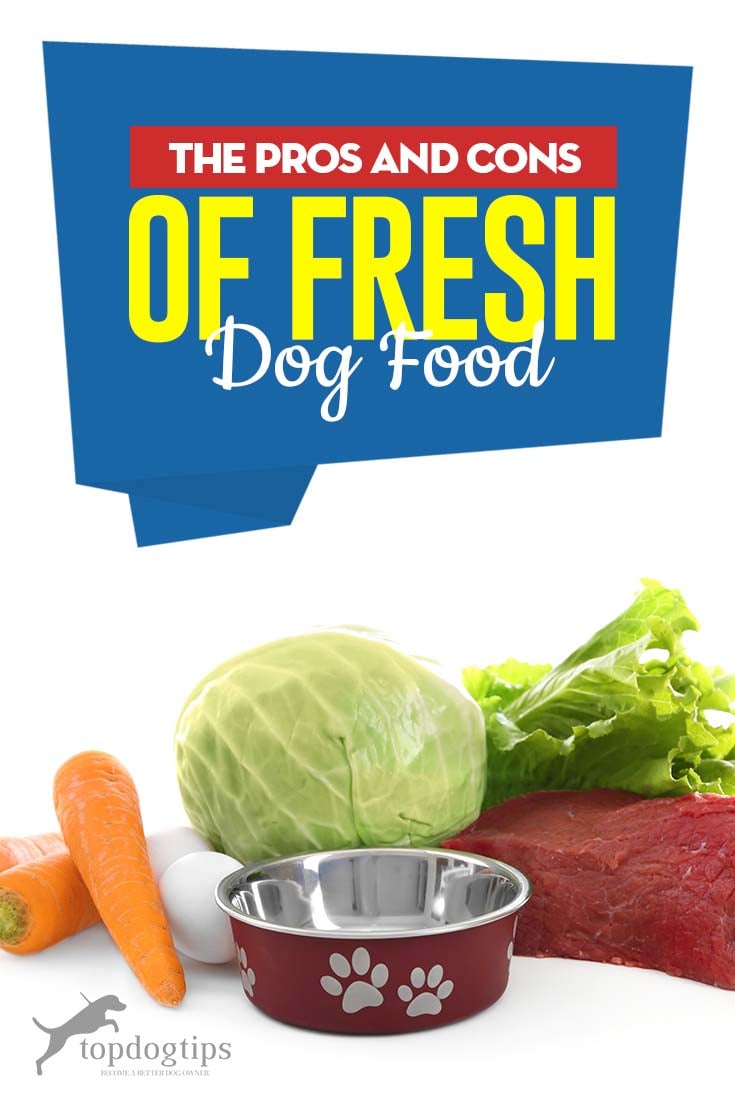There are many benefits to feeding your pup fresh dog food, but you should carefully consider the downside before you make the switch or begin giving your pets fresh foods. Feeding food made with only fresh ingredients and no fillers will help you to have a healthier dog, but what you must consider is the added cost, if fresh dog food is practical for your lifestyle, and what type of fresh diet to feed your pups.
Fresh Ingredients, No Fillers, Healthier Dog
One of the biggest benefits to feeding your pet fresh dog food is that you know exactly what is in the meal that you're serving. When you choose a fresh dog food from a delivery service or the refrigerator section of your local pet store, you will be able to easily read all of the ingredients that are in the package; none of them will sound unfamiliar.
This allows you to ensure that the food only contains the ingredients that you want your dog to consume, and none of the ones you don’t, like fillers, preservatives or any artificial stuff. You will see the expiration date or the use by date because fresh dog foods are not shelf stable.
Fresh dog food is easier on a dog’s digestive system because they are not having to digest the processed ingredients found in traditional kibble. Reducing the processed ingredients that your dog has to digest will help them to have more energy because their bodies are not slowed down by a long, heavy digestion.
Other health benefits reported by pet owners include a softer and shinier coat, better eye health and stronger immune system. Healthy fatty oils found in most fresh dog foods help your dog’s coat look and feel its best. Fresh ingredients also support your dog’s eye health. Helping your dog’s digestion, skin, coat, and eyes, you could even notice a reduction in the number of vet visits that your dog may need because their overall health has improved.
Cost, Practicality, and Finding the “Right” Diet
One thing that is certain about fresh dog food, store bought or homemade, is that it is much costlier than traditional commercial kibble. While the amount of food that your dog will need, pound for pound, will decrease when switching to fresh food, the cost per pound of that food increases drastically.
After you switch from a traditional bag of dog food to either dog food delivery service of store-bought food from fridge in pet stores, your pet food budget could potentially double or even triple. The amount of the cost increase will depend on if you purchase pre-made meals, or if you prepare the food from ingredients that you purchase.
Pre-made dog food can stay in your refrigerator for approximately two or three days (or you can freeze it for longer). This means that if you are not using dog food delivery service, you will have to stop by the store a few times per week to ensure you have enough food to feed your pup. This is another huge con when comparing to traditional dog food that will last an entire month, or more.
If you choose the delivery method then plan to receive several shipments each month. When the food is delivered, you will want to make sure that it is not sitting outside for too long or it might spoil. Fresh, but frozen dog food, is one way to decrease your need to receive multiple deliveries or go to the store frequently, but keep in mind that the freezing and thawing process may decrease the nutrients in the food.
Home-cooked dog food recipes is always an option, but buying pre-made dog food is much more practical and convenient than making your dog’s food fresh each day, though it costs more than when you purchase your own ingredients and make the food at home.
If you choose to make your dog's food from scratch, keep in mind that your grocery bill will not only increase, but you will have to devote time preparing your these meals. Some people choose to prepare homemade dog food a few days in advance, while others prepare the food each day.
When you meal prep for your pet, the food can be kept for two to three days, just like with store bought fresh dog food. Either way, know that you will have to spend time preparing and making meals almost each day. It is not as easy as scooping a measured amount of kibble and pouring it into a bowl or opening a pre-made and measured fresh meal that you purchase. Making your dog’s food is less expensive than buying pre-made fresh food, but it requires time to prepare, so it may not be practical.
Whether you choose to purchase fresh dog food or make it yourself, you need to provide your pup with all the essential nutrients. This is one of the biggest dangers when preparing homemade meals, since it's hard for an owner to make the right calculations. Remember to take your dog’s allergies into consideration as well. Practice safe food handling when preparing or making your dog’s food, especially raw meals. You could also get sick when dealing with fresh raw diet.
The good quality of ingredients in fresh dog food has the ability to provide your dog with numerous health benefits, but be careful to consider all aspects of what it takes to feed your pet fresh foods. Knowing what it will take, both financially and practically, will help you make the decision to feed your dog fresh dog food or to use traditional dog food.
READ NEXT: 50 Best Homemade Dog Food Recipes














